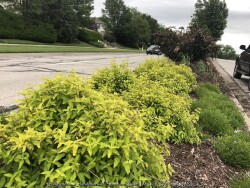
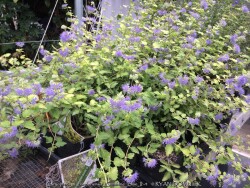
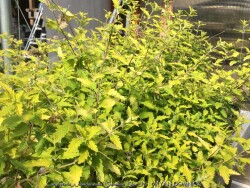
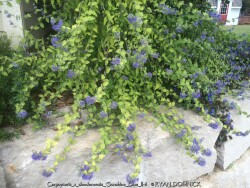
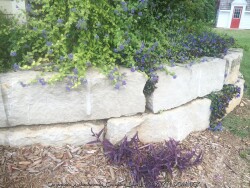
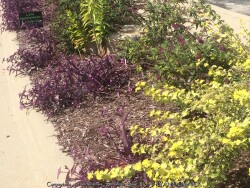

Plant Min Zone: 5a
Plant Max Zone: 9b
Sunlight: All Day Full Sun, Full Sun
Water / Rainfall: Low, Average
Soil Quality: Poor, Average
Bloom Season: Late Summer, Fall
Flower Color: Blue
Berry / Fruit Color: Insignificant
Spring Foliage Color: Chartreuse
Summer Foliage Color: Chartreuse, Gold
Fall Foliage Color: Chartreuse, Gold
Evergreen Foliage: No
Winter Interest: No
Scented Flowers: Yes
Drought Tolerance: High
Wet-Feet Tolerance: Low
Humidity Tolerance: Medium
Wind Tolerance: High
Poor Soil Tolerance: Rocky Soils, Sandy Soils, Shallow Soils, Alkaline Soils (high PH), Acidic Soil (low PH)
Height: 2' - 3'
Width: 2' - 3'
Growth Rate: Slow, Medium
Service Life: Long: 5-10 years
Maintenance Need: Low
Spreading Potential: Low
Yearly Trimming Tips: Shrub Normally Winter-kills so trim to 6-12" off Ground in Winter or Early Spring: Blooms on New Wood.
Plant Grouping Size: Specimen Planting of 1-3, Small Grouping of 3-5, Medium Grouping of 5-10
Best Side of House: South Exposure, West Exposure
Extreme Planting Locations: Top of Retaining Wall Locations, Survives Severe Drought, Tolerates Extreme Heat, Resistant to Rabbits
Ornamental Features: Multiple Seasons of Interest, Long Blooming Season, Exceptional / Colorful Foliage
Special Landscape Uses: None
Possible Pest Problems: Root Rot Disease
Plant Limitations: May get Occasional Winter-kill, Needs Thick Winter Mulch, Needs Excellent Drainage
Shippable in 2026: YES
Sunshine Blue® II Bluebeard (Caryopteris x clandonensis 'Sunshine Blue II') is the hardiest caryopteris yet! Sunshine Blue II is a new, improved variety of the classic Sunshine Blue, but it's much more tolerant of cold climates. If you've had trouble with bluebeard surviving winter in your area in the past, now's your chance to enjoy the vivid gold foliage and blue blooms of this late blooming favorite. An excellent plant for attracting pollinators! Top reasons to grow Sunshine Blue II caryopteris: 1.The hardiest caryopteris yet - survives winter even in the Midwest. 2.Colorful all season, especially late in summer when blue flowers appear. 3.Thrives in hot, dry, sunny spots. Maintenance Notes: Plant bluebeard in full sun and well-drained soil. Though Sunshine Blue II tolerates colder conditions than other caryopteris, it will do best if you avoid planting it in spots where the soil is cold or wet in winter and early spring. Cut back hard in spring, after the new growth emerges. Avoid late season planting in coldest parts of its hardiness range. In Eastern Kansas, this cultivar performs WELL with just about everything nature has to challenge it! Heat and drought are tolerated well. Cold tolerance is no problem for us in zone 6. Caryopteris gives great winter interest with it's dried flowers. The only maintenance this shrub needs is cutting back about 1/2 way in early spring before new growth emerges. No disease or pest problems. Great plant for berms or hot West or South exposures in full sun. Do not plant in rich moist soils or root rot will probably occur. Even when not blooming, the intense gold foliage looks good on it's own or combines well with earlier season blooming red, purple, blue, or magenta flowering plants. Combine with crapemyrtles and butterflybush to create a late season "all you can eat" buffet for pollinators! All Proven Winners® plants are legally propagated, healthy and vigorous, true to name, and tagged with color pictures and growing information.